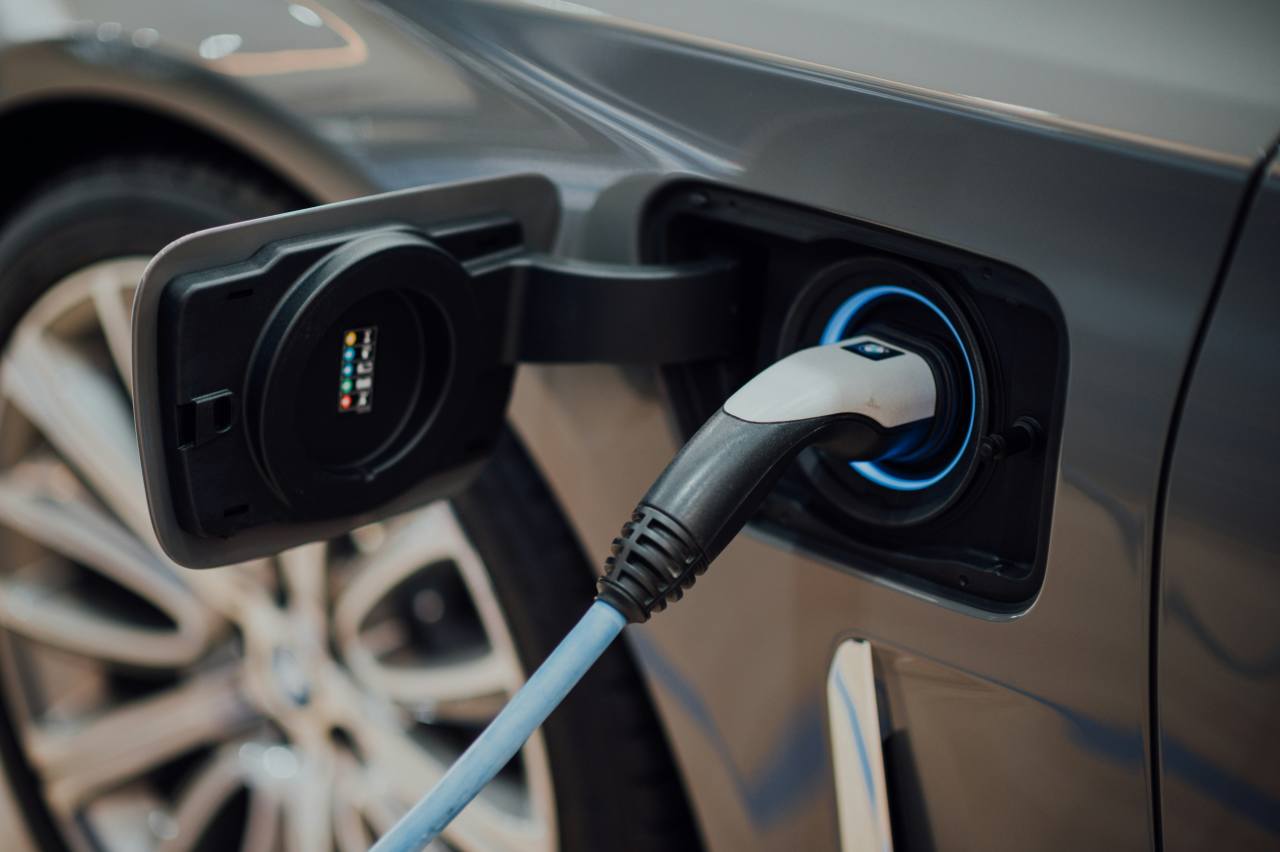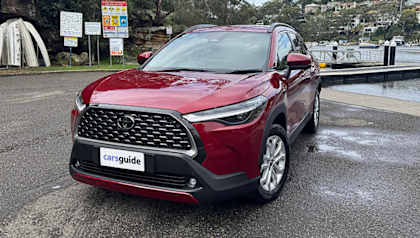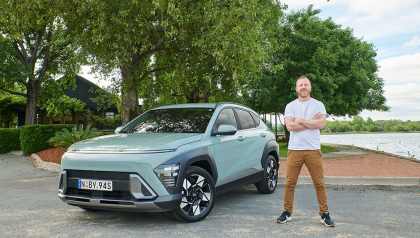What springs to mind when you think of SUVs done dirt cheap?
Probably the GWM Haval Jolion and MG ZS from China. With prices starting from the low-to-mid 20s, they have dominated the bottom end of the small SUV segment for the best part of this decade.
Now there are so-called “all-new” versions of each, promising more than just low prices. But as hybrids nearing $40,000? And up against cracking hybrid alternatives like the Toyota Corolla Cross, Hyundai Kona and Honda HR-V?
We’re here to find out if you’ll be thunderstruck by the most-expensive Jolion and ZS ever. Let’s go!
Price and features – Do they represent good value for the price? What features do they come with?
So, how expensive are they really?
The Jolion Ultra Hybrid (known elsewhere in the world as the Jolion Pro due to its unique styling) is listed from $38,990 drive-away, while the ZS Essence Hybrid+ officially kicks off from $36,990 drive-away. Just $2000 separates the two.
But don’t worry, GWM and MG haven’t lost all perspective, because both are jam-packed with features, including LED headlights, artificial leather upholstery, electric and heated front seats, digital instrumentation, a 12.3-inch touchscreen, a 360-degree view camera, adaptive cruise control, a panoramic sunroof, a connected services app and 18-inch alloy wheels.
But there are differences too, like a ventilated driver’s seat, a powered front passenger seat, a wireless phone charger and a head-up display found only in the Jolion Ultra, versus embedded satellite navigation and DAB+ digital radio that only the ZS Essence boasts.
.jpg)
Of course, these come on top of all the usual standard items, like keyless entry/start, climate control, Apple CarPlay/Android Auto, airbags all round and advanced driver-assist safety. We dive deeper into these cars’ safety later on.
To find similar specification highs in rivals like Corolla Cross, Kona and HR-V hybrids, you’re already in the low-$40K bracket, or otherwise you’ll need to step down a class to smaller SUVs like the Chery Tiggo 4 hybrid and Toyota Yaris Cross hybrid.
However, we do need to talk about MG’s pricing tactics.
Worryingly, there has been heavy discounting on ZS hybrid for a while now, with some promotions at over 10 per cent off, which is bad news for existing buyers who pay full whack, as this may affect resale values. To a lesser extent, others, including GWM, do this regularly as well. Our advice is to haggle hard on price and never pay full retail.
| Model | Score |
| GWM Haval Jolion Ultra Hybrid | 7/10 |
| MG ZS Essence Hybrid+ | 7/10 |
Design – Is there anything interesting about their designs?
If you’re reading this from outside of Australia and New Zealand, you’ll likely recognise the current Jolion hybrid variants as simply updated versions of the Jolion Pro.
This means the GWM isn’t as new as it looks, because the Jolion Pro is actually as old as the regular previous Jolion, meaning the design is going on to five-years old now, and it continues in facelifted form. In fact, the Jolion Pro is a separate model altogether in China, badged as the Chitu. Watch the CarsGuide video comparison to hear how that name is pronounced. It certainly would not fly in Australia!
Whichever name you know this SUV by, it remains too narrow-tracked, with the wheelarch overhang looking like an oversized frock over skinny legs. Frumpy.
That said, the silhouette is a bit more rakish than the regular Jolion’s, while some of the latter’s visual trademarks carry through, including the vertical LED lighting signatures, bold grille and balanced overall silhouette.
The ZS, on the other hand, is definitely an all-new design, and miles more attractive than the old tippy-toed model that never sat quite right on the road.
It carries MG’s current pinched-nose styling, which may seem a little too squished for some tastes, but the nose does connect with the latest, related MG3’s. Though neat and clean, the tail treatment has an incredibly generic appearance. It could belong on any mainstream SUV from Kia, Hyundai, Mazda or Volkswagen.
Which design is the more pleasing of the two?
Though the Jolion’s tracks at 1577mm (front) and 1597mm (rear) are actually 38mm and 37mm wider respectively, the ZS’ wheels better fill out their arches, giving it a more planted and harmonious look. And that’s despite the latter’s 3mm-loftier ground clearance, at 161mm.
As such, even though it may seem larger overall, the MG is in reality smaller in every main dimension except height, at 4430mm long, 1818mm wide, 1635mm tall and sitting on a wheelbase of 2610mm. This compares to the GWM's 4470mm length, 1898mm width, 1625mm height and 2700mm wheelbase.
| Model | Score |
| GWM Haval Jolion Ultra Hybrid | 6/10 |
| MG ZS Essence Hybrid+ | 7/10 |
Practicality – How practical is their space and tech inside?
There's lots to like about the Jolion’s interior.
It offers an excellent driving position, aided – at last – by a steering wheel that adjusts for reach as well as height (unlike in the ZS), crisp and clear digital instrumentation that’s enhanced by an excellent head-up display, decent all-round vision and acres (relatively speaking) of space. That longer wheelbase sure does help.
GWM's designers have obviously worked hard to make this an appealing place to be as well, but perhaps not where you may expect.
.jpg)
Deep windows and that long sunroof let in loads of light for an airy ambience; the simplicity of the horizontal dashboard remains contemporary and attractive half-a-decade on; storage borders on staggering, including in the hungry door cards, centre armrest bin and lower console; and the fit and finish is above reproach.
Plus, the front seats are sufficiently comfortable (initially at least), the ventilation is effective and that 12.3-inch touchscreen sits loud and proud above a row of actual climate-control buttons. All’s looking pretty promising in here.
However, there are some very annoying things about this (and every) Jolion’s interior, and they begin even before we step inside.
.jpg)
The only way to enter the car keylessly – as in, fob in purse or pocket, as is the preferred method for most people – is via the driver’s side. Driver first, so kids, the elderly or your hot date must wait vulnerably by the kerb, while the driver faffs about.
Once sat inside, you'll notice that most vehicle controls and functions are within the central touchscreen. And while it is slick in operation and extremely clear in resolution, GWM hasn’t bothered to switch the fast-action icons – including Home and electronic Climate switches – over to right-hand drive. So, everything is a stretch for both eyes and an arm to the top left side of the big 12.3-inch display. Does GWM test these out beforehand?
Yet an actual, consequential problem is that the driver's eyes are off the road for moments at a time, which is an unacceptable hazard, prompting an over-eager driver monitor to screen and sound jarring alerts –regularly and annoyingly, further distracting the driver. Flummoxing.
Also, accessing some of the stuff within the touchscreen requires two or three menu dives, meaning that, again, the driver is distracted. And then, again, the driver monitor begins its driver-berating bongs.
You can turn this off for the duration of a journey, but the system resets to default on. And why should you need to extinguish important advanced driver-assist systems? There seems to be no permanent way around this idiocy.
Additionally, you might notice the lack of a physical volume button for the audio/multimedia system (except for the toggle on the steering-wheel spoke), further necessitating sub-menu explorations. Good luck if you're prone to motion sickness.
.jpg)
Nor is there DAB+ digital radio, wireless for Apple CarPlay/Android Auto (same applies to the ZS), or USB-C ports (just USB-As), further betraying the Jolion’s real age inside. And, after a spell, the front seats may start to feel flat and achy. Plus, the heating elements are only for bottoms.
However, all is not lost, because the Jolion’s back row is tops.
Access is easy. Leg and shoulder room is generous. And the backrest and cushion are inviting and comfy. Noticeably more so than in the comparatively barren ZS.
.jpg)
And lots of nice details abound, like one-touch power window lifters, a folding centre armrest with cupholders, and LED overhead lighting. All are missing in the MG. Plus the Jolion ushers in more USB-A ports and additional storage.
A mix of good and not-so-good in the GWM's passenger compartment, then. But what about the ZS?
First impressions are reassuringly normal. You can enter from either side of the SUV without pressing a key fob, and once ensconced on soft yet supportive front seats, the MG’s newness is immediately apparent.
.jpg)
This is a much more modern and user-friendly dashboard experience, with easy-access buttons for the (also 12.3-inch) central touchscreen, where the sub-menus are fast to figure out and use. Even selecting gear is better using a quaintly shaped T-bar lever instead of the GWM's round selector.
Even after a long spell in them, the ZS’s bolstered front seats feel as if they’re hugging you, and – in Essence guise at least – they are more attractively finished in their pattern and materials. In fact, the general ambience and quality seems an entire class above the GWM.
To that end, the chunky flat-bottom steering wheel gives off very German vibes, as do the very-BMW-style instrumentation graphics, which are smart and colourful and also contemporary.
But you’ll soon be missing the Jolion’s head-up display and reach-adjustable steering column. And you’ll realise that storage isn’t as plentiful.
And the MG’s back-seat area is also compromised.
Yes, it remains comfortable and spacious, but the Jolion does both better out back. There is noticeably less legroom, the cushion seems a bit flatter and why would MG deny passengers a centre armrest and cupholders? They must fight over a single USB-C port and fumble in the dark as the overhead lighting has gone AWOL.
.jpg)
Oh well. The ZS does feel better finished, with nicer materials. And there can be no question about which makes for a better family SUV further back.
You cannot fold the rear seatbacks remotely from standing outside in either contender. But, with 443 litres available with all seats in situ versus just 255L, the MG’s cargo capacity clobbers the GWM's, nearly doubling the amount of space available. In fact, in shallow hybrid guise, the Jolion is fully one-third smaller compared to the petrol-powered version, due to all the electrical gubbins underneath.
With the backrests dropped, the MG’s boot opens up to a handy 1457L, in contrast to the GWM's tight 916L. Plus the ZS also provides additional under-floor storage. It is no contest.
But neither offers a spare wheel, just a tyre mobility kit, which shows disregard for Australians, especially out in rural areas. There is no excuse. If Toyota can put one in its hybrids, others can too. This should be a non-negotiable.
| Model | Score |
| GWM Haval Jolion Ultra Hybrid | 6/10 |
| MG ZS Essence Hybrid+ | 8/10 |
Under the bonnet – What are the key stats for their engines and transmissions?
On paper, both are somewhat similar series-parallel hybrids, combining a modest 1.5-litre engine with an electric motor, to drive the front wheels via a special hybrid transmission.
In the Jolion’s case, we’re talking about a 70kW/125Nm 1.5-litre four-cylinder petrol engine and a 115kW/250Nm electric motor, making a total of 140kW of power and 375Nm of torque.
The MG, meanwhile, employs a 75kW/128Nm 1.5-litre four-cylinder petrol engine and a 100kW/250Nm electric motor, for a combined 158kW and 465Nm.
Where the real differences in these hybrids lay is in mass. Tipping the scales at 1420kg, the ZS weighs a hefty 200kg less than the 1620kg Jolion, for a far-superior power-to-weight ratio of 111.3kW/tonne versus 86.4kW/tonne, meaning that the MG is usefully quicker off the line.
We recorded 8.1 seconds to 100km/h for the MG, compared to 8.9s for the GWM.
So, it’s a surprise to learn that the latter has better braked towing capacity, at 1300kg versus just 500kg for the MG. And the ZS’s torsion beam rear suspension design looks inferior on paper to the Jolion’s more-sophisticated multi-link independent rear end.
| Model | Score |
| GWM Haval Jolion Ultra Hybrid | 6/10 |
| MG ZS Essence Hybrid+ | 8/10 |
Efficiency – What is their fuel consumption? What are their driving ranges?
On paper, the Jolion is not as economical as the ZS, as the official combined fuel consumption figures suggest, at 5.1 litres per 100km plays 4.0L/100km. These equate to 118 grams/km and 110g/km respectively.
Please do note that the ZS needs to drink from the more expensive 95 RON premium-unleaded bowser, compared to the Jolion’s taste for the standard 91 RON brew.
Now, if these numbers are to be believed, a driver could theoretically average nearly 1080km between refills in the GWM and over 870km in the MG. This discrepancy is likely due to the latter’s significantly smaller fuel tank, at 41L versus 55L.
.jpg)
However, during our week with these hybrids, their trip computers told a different story, with the ZS displaying 6.0L/100km and the Jolion a disappointing 8.3L/100km. Worse still, by the end of our testing, those numbers shot up to 6.7L/100km (MG) and a shocking 10.2L/100km (GWM), respectively.
Both were subjected to the same performance testing and other driving procedures. We can only surmise that the heavier Jolion’s less-powerful engine has to work harder than the ZS’s.
| Model | Score |
| GWM Haval Jolion Ultra Hybrid | 5/10 |
| MG ZS Essence Hybrid+ | 7/10 |
Driving – What are they like to drive?
Let’s start with the GWM.
If you are familiar with the old Jolion, you'll instantly recognise that the new one is improved. It seems to be a bit smoother and quieter, though there appears to have been on mechanical changes accompanying 2024's facelift.
Up to a certain point, the hybrid powertrain offers strong performance, aided by the electric motor, which takes up much of the slack at lower speeds. At times, as with the MG, it runs purely as an EV, at up to about 50km/h. Hushed and refined.
.jpg)
Yet you also do notice the extra urge of electrification right up to about freeway speeds, with the motor adding extra oomph, for punchy overtaking and instant zip. The Jolion hybrid’s spirited performance is one of the car’s dynamic highlights.
Another positive is its handling poise on smooth roads, with the Jolion faithfully going precisely where it is pointed to. The steering feels quite sharp, and it corners well to boot, providing reassuring road holding as well as a welcome lack of rack rattle. The standard Kumho Solus 225/55R18 tyres seem to be a good fit here.
Despite a biggish turning circle of 11.5 metres, the GWM is easy to drive around town. Three steering modes are offered – Light (way too lifeless, yet nervous at speed due to the helm’s directness), Comfort (fine) and Sport (heavy, like stirring porridge, and without any feel/feedback).
.jpg)
The Jolion’s suspension, however, needs a lot more fine-tuning to work properly on Australian roads.
It still seems a bit loose and clangy, and that means that it can feel like a handful through tighter corners. Worse still, the ride feels jittery and lurchy on anything but the smoothest of roads, so it’s not very comfortable. You're constantly aware of every bump you go over. A couple of times, insufficient suspension travel saw us bottom-out as well.
This vies with the Chery Tiggo 4 as the most agricultural suspension set-up I've experienced in a new vehicle in 2025.
.jpg)
Like a lot of other hybrids including with the MG, the GWM's brakes can feel snatchy and artificial, and there’s also too much road noise coming through in both of the SUVs here. This, combined with the unsettled ride, comes as a surprise, given the advanced rear suspension specification. If you expect sophistication, you'll be sadly let down.
But the biggest issue is the Jolion’s advanced driver assist system (ADAS), which is just too nervous and intrusive.
Along with the aforementioned driver attention monitor all-too-regularly sounding off, creating frustration and ultimately fatigue, the adaptive cruise control needs more fine tuning, since it is too easily flummoxed by minor things.
.jpg)
Here's our example. Through even gentle curves on freeways, or when it detected a parked or slower vehicle in an adjacent lane as a (non-existent) collision risk, it rapidly washed off speed and even applied sudden braking automatically, creating a very real hazard for vehicles travelling directly behind (as well as stress for the car's occupants). Likewise, the lane-keep system’s erratic tugging at the wheel when it believed the car was about to stray was also tiring.
Where is the nuance here? Bordering on being dangerous, this behaviour is unacceptable. Australian ADAS road testing is required.
In stark contrast, there are few if any areas where the ZS hybrid isn’t superior from behind the wheel.
.jpg)
Like the GWM hybrid, step-off acceleration feels muscular, but the powertrain combined seems significantly gutsier and yet less coarse, with a willingness to rev more freely. Throttle response through its three forward gears (compared to the Jolion’s two-speed CVT set-up) is also faster and more immediate, and it is certainly smoother to boot.
A quicker 0-100km/h time only tells half the story. Although not quite as reactive as the GWM's, the MG’s steering feels more connected, providing both a tighter turning circle around town for easy parking and instant manoeuvres, as well as a more relaxed attitude out on the larger suburban roads that will likely be this car’s main habitat in Australia.
At highway speeds, on Giti GitiComfort 215/50R18 tyres from China, the ZS’ handling feels planted and direct, courtesy of firmer yet somehow suppler suspension, bringing in greater body control and more discipline, without the excessive movement, pitching and fatigue than blights the Jolion on our more challenging bitumen.
.jpg)
And you avoid being subjected to the annoying, condescending ADAS insisting that you are too distracted, heading for imminent collision, or are about to stray from your lane. The MG seems to be a much better tuned vehicle for Australia than the Jolion is, and that's really prevalent when you're driving back to back.
Probably the best thing about the ZS, though, is how much more comfortable the ride is. While quite firm and even bouncy over bumps on occasion, it is not jerky nor fidgety, and the suspension feels better tied down. It's just a more solid feeling piece of engineering. Who needs a multi-link rear end?
That all said, the MG is far from being a driver's SUV, as it lacks the steering poise, dynamic flair and supple ride of the best of them, but it is much more enjoyable and reassuring to drive than the Jolion, or the dire previous-shape ZS.
| Model | Score |
| GWM Haval Jolion Ultra Hybrid | 5/10 |
| MG ZS Essence Hybrid+ | 7/10 |
Safety – What safety equipment is fitted? What are their safety ratings?
So, if you were to guess which of these two scores a four-star ANCAP rating, you’d probably go for the older design, right? Wrong!
The ZS has achieved just four stars, against five stars for the Jolion – though that’s for the original model launched back in 2020 and tested in 2022, so may not rate so highly under the stricter 2024 requirements that the MG had to meet.
And both bring a high level of advanced driver-assist systems – or ADAS – to the table, including Autonomous Emergency Braking (AEB) with pedestrian and cyclist detection, rear-cross-traffic alert, blind-spot alert, lane-keep assist systems, a driver fatigue monitor, auto high beams, traffic sign recognition and even a vehicle-exit warning.
.jpg)
Both the Jolion and ZS’s AEB work between 5km/h and 150km/h (car-to-car), 5km/h and 80km/h (cyclists, pedestrians) and 60km/h and 150km/h (lane-support systems), according to ANCAP.
Additionally, you’ll find parking sensors, hill-start assist, electronic stability and traction controls, anti-lock brakes with brake assist, electronic brake-force distribution and front/side/curtain airbags. But only the Jolion includes a front centre airbag. Plus, two ISOFIX latches in the rear seats and a trio of child-seat tether anchor points are also fitted.
Which is safer, then? While the MG’s four stars obviously doesn’t look as good as the GWM's five, the latter’s distracting and frankly fatiguing ADAS interruptions is a black mark against it.
| Model | Score |
| GWM Haval Jolion Ultra Hybrid | 7/10 |
| MG ZS Essence Hybrid+ | 7/10 |
Ownership – What warranty is offered? What are their service intervals? What are their running costs?
Officially, both offer a seven-year/unlimited-kilometre warranty with service intervals at every 12 months or 15,000km, and that’s a decent wedge of coverage in anybody’s language.
But, if you choose to service your ZS at an MG dealership, that stretches out to a 10-year/250,000km warranty. Only Nissan beats that at the time of publishing!
Plus, while the GWM also includes five years of roadside assistance and capped-price servicing (averaging to about $405 annually), the MG bumps both of those up to seven years (with an annual service cost of under $300), underlining a more complete ownership proposition.
Which, in a nutshell, sums up the ZS against the Jolion.
| Model | Score |
| GWM Haval Jolion Ultra Hybrid | 7/10 |
| MG ZS Essence Hybrid+ | 9/10 |
Verdict
Picking a winner isn’t difficult, because the MG tops the GWM overall.
That's because it offers more performance, more refinement, more sophistication, more cargo space and far less lip from the advanced driver-assist systems.
Though not the best by some margin, the ZS is one of the most improved SUVs of 2025 – at least in Hybrid+ guise.
However, that MG continues to discount it so heavily is a worry, because that can impact resale values.
Which is ironic, because unlike the Jolion, the MG is now one that you don't have to buy just on low price alone!
GWM Haval Jolion Ultra Hybrid
| Likes | Dislikes |
| Powerful engine | Nuisance ADAS interruptions |
| Great back seat | Jittery ride |
| Easy steering | Distracting touchscreen operation |
MG ZS Essence Hybrid+
| Likes | Dislikes |
| Value proposition | No reach-adjustable steering |
| Refined interior | Some road/tyre noise intrusion |
| Decent dynamics | Minor equipment anomalies |
| Model | Overall score |
| GWM Haval Jolion Ultra Hybrid | 6.1/10 |
| MG ZS Essence Hybrid+ | 7.5/10 |


.jpg)
.jpg)
.jpg)
.jpg)
.jpg)
.jpg)
.jpg)
.jpg)
.jpg)
.jpg)
.jpg)
.jpg)
.jpg)
.jpg)
.jpg)
.jpg)
.jpg)
.jpg)
.jpg)
.jpg)
.jpg)
.jpg)
.jpg)
.jpg)
.jpg)
.jpg)
.jpg)
.jpg)
.jpg)
.jpg)
.jpg)
.jpg)
.jpg)
.jpg)
.jpg)
.jpg)
.jpg)
.jpg)
.jpg)
.jpg)


.jpg)





